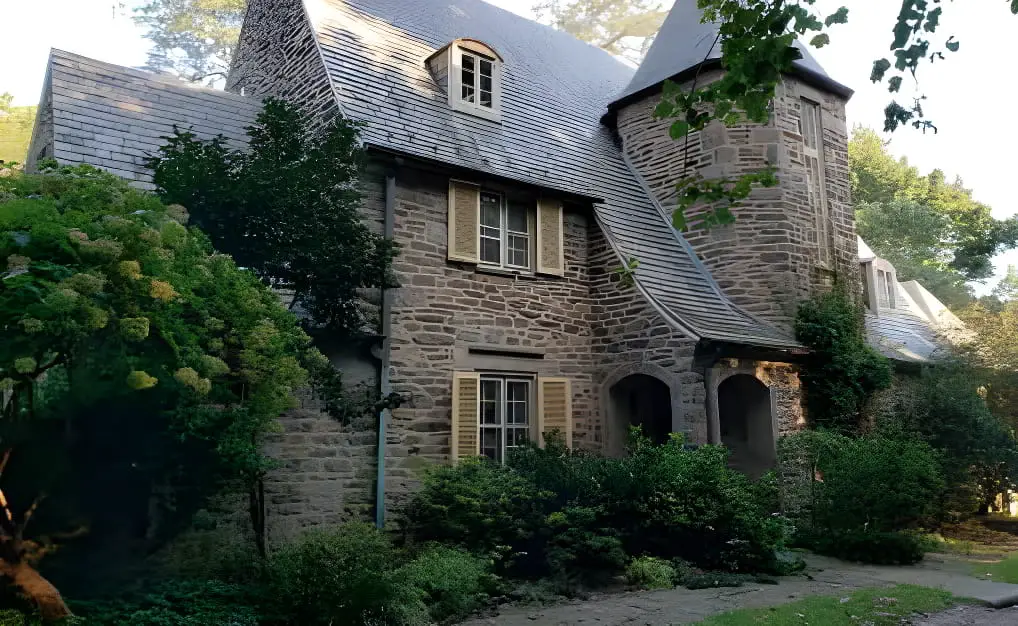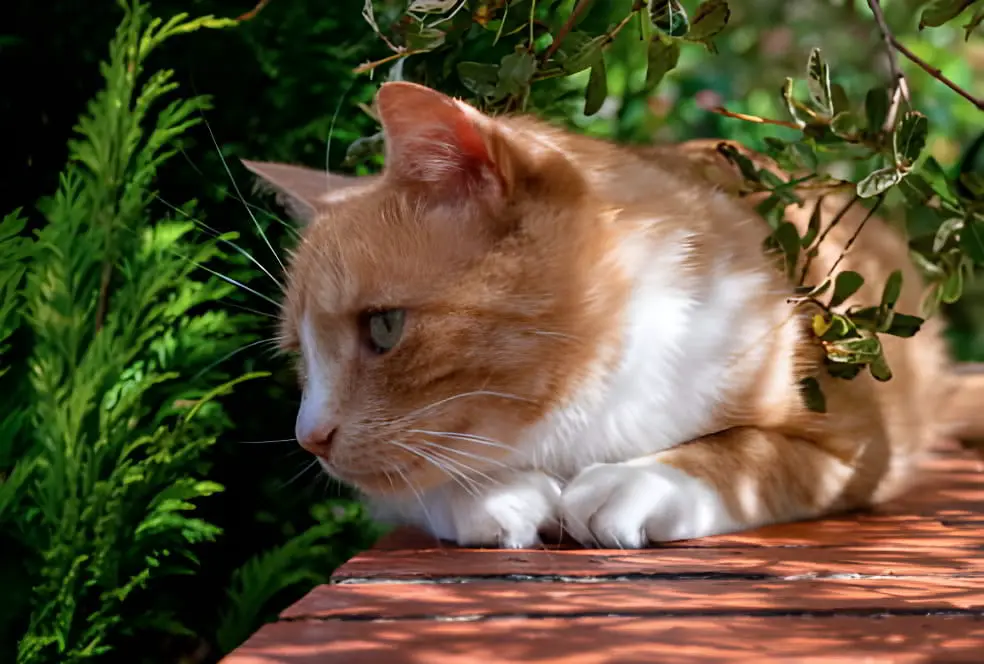Last Updated on: 27th June 2023, 04:14 am
Last Updated on by Viliam
A catslide roof is a type of roof that slopes downwards on one side of a building and extends past the exterior wall to create a sheltered area. This unique design has been used for centuries and is still popular today in both traditional and contemporary architecture. In this article, we will explore the design of catslide roofs, their benefits, and disadvantages.
Why is it called a Catslide roof?
A catslide roof is named after its resemblance to the way a cat slides down a roof. The roof design has a single sloping roof plane, usually at the rear of a building, that extends lower than the roofline of the rest of the structure. This slope creates a sheltered area that resembles a cat sliding down the roof.

Catslide roof history
The history of catslide roofs dates back to medieval times when they were used in buildings such as barns and stables. The roof design provided sheltered space for animals and equipment while also shedding water away from the structure. In the 17th and 18th centuries, catslide roofs became popular in English cottages, where they were used to provide additional living space. Today, catslide roofs are still used in a variety of buildings, from residential homes to garden sheds and outdoor living areas.
Design
Catslide roofs are a variant of a gable roof, also known as a pitched or peaked roof. The distinguishing feature of a catslide roof is the extended slope on one side of the roof. This slope typically extends down to the first floor level or lower and can vary in length. The other side of the roof is usually a standard gable or hip roof.
One of the key design elements of a catslide roof is its ability to create a sheltered area. This area can be used for a variety of purposes such as an outdoor patio or storage area. Cat-slide roofs can also add visual interest to a building, breaking up the monotony of a standard gable roof.
Benefits of catslides
There are several benefits to this type of roof design that make it a popular choice for homeowners and builders.
Additional space
One of the main benefits of a catslide roof is the additional space it provides. The extended slope of the roof creates a covered area that can be used for a variety of purposes. For example, this space can be used as a covered patio, a carport, or even additional living space. This is especially useful in homes or buildings with limited square footage, as it allows homeowners to make the most of their available space.
Aesthetics
In addition to the practical benefits of a catslide roof, there are also aesthetic benefits. The unique design of this type of roof can add visual interest to a building and make it stand out from neighboring structures. This can be especially appealing for homeowners who want their home to have a distinctive look.
Protection
Another important benefit of a catslide roof is the protection it provides. The extended slope of the roof provides additional protection from the elements, such as rain and snow. This is especially important for the area beneath the roof, as it can help to prevent water damage and other issues that can result from exposure to the elements.
Disadvantages of catslide roofs
Limited headroom
While catslide roofs offer several benefits, they also come with some drawbacks. One of the major disadvantages of a catslide roof is limited headroom. The extended slope of the roof can reduce the height of the ceiling in the area beneath it, making it less than ideal for living spaces. This can be a concern for taller individuals or in spaces where a lower ceiling height is not desirable.
Maintenance
Another disadvantage of a catslide roof is maintenance. The extended slope of the roof can make it challenging to access and clean the higher portions of the roof. This can lead to increased maintenance costs over time, especially if the roof is not properly maintained.
Increased costs
Finally, the unique design of a catslide roof can also make it more expensive to build compared to a standard gable roof. The added complexity of the design can require more labor and materials, which can drive up the overall cost of the roof.
Uses
Residential homes
Cat-slide roofs are versatile and can be used in various settings. They are commonly used in residential homes to create additional living or storage space. With their unique design, they are especially useful in smaller homes where space is limited. Homeowners can add a catslide roof to their home to expand the living area or create a sheltered storage space.
Garden sheds
In addition to residential homes, catslide roofs are also popular for garden sheds. These roofs provide a sheltered storage space for garden equipment and tools, protecting them from the elements.
Outdoor living areas
Cat-slide roofs are also an ideal choice for outdoor living areas such as patios and decks. They offer protection from the sun, rain, and snow, making them perfect for creating a cozy outdoor space.
Installation and maintenance
Installing a catslide roof is similar to installing a standard gable roof. The main difference is the additional framing required for the extended slope. A skilled contractor can ensure that the catslide roof is properly installed to provide adequate support and protection from the elements.
When it comes to maintenance, catslide roofs require regular cleaning to prevent debris buildup and water damage. The extended slope can make cleaning difficult, especially for the higher portions of the roof. Regular inspections can also help identify any damage or wear and tear that may require repairs.
Types of catslide roofs
There are several types of catslide roofs, including:
Full cat-slide roofs extend the full length of the building, providing additional space and shelter over the entire footprint of the structure. This type of catslide roof is often seen on smaller residential buildings such as cabins, sheds, and cottages. It can provide an excellent solution for homeowners looking to create additional outdoor space, whether for storage or a cozy outdoor living area.
A half cat-slide roof, on the other hand, only extends over a portion of the building, typically over a porch or entranceway. This design is often used to create a more visually interesting entrance to a building or to provide a sheltered area for outdoor seating. Half catslide roofs can also be used to provide additional protection to the exterior of the building, shielding it from the elements.
Reverse catslide roofs slope upwards instead of downwards, creating a unique design element. This type of roof is often used in modern or contemporary architecture to create an eye-catching and distinctive look. While reverse catslide roofs are less common than their downward-sloping counterparts, they can provide an excellent way to add visual interest to a building.
What is the purpose of a cat slide roof?
The purpose of a catslide roof is to provide additional space, protection, and aesthetics to a building. The extended slope of the roof creates a sheltered area that can be used for living or storage space. Additionally, the slope provides protection from the elements, such as rain and snow, for the area beneath it. The unique design of a catslide roof can also add visual interest to a building, making it stand out from neighboring structures.
What is the difference between dormer and gable?
A dormer is a small structure built into a sloping roof, usually containing a window. It projects out from the roof and provides additional headroom and light to an upper-level room. A gable, on the other hand, is a triangular-shaped portion of a wall that is enclosed by two sloping roof planes. It is typically found at the end of a pitched roof and helps to shed water away from the structure. While a dormer is a small structure built into a roof, a gable is a design feature that is part of the roof itself.
Why is it called dormer?
The word “dormer” comes from the French word “dormir,” which means “to sleep.” In medieval times, dormers were built into the roofs of castles and other structures to provide additional sleeping quarters for servants or soldiers. Over time, dormers evolved into structures that provided additional light and ventilation to upper-level rooms.
What is a catslide dormer?
A catslide dormer is a type of dormer that is built into a catslide roof. It is a small extension built into the roof that usually contains a window. The catslide dormer is designed to blend in with the slope of the roof, and it is often used to provide additional light or ventilation to an upper-level room.
A catslide dormer is a type of dormer that has a roof that slopes downwards to the back of the house, usually at a shallower angle than the main roof. A catslide dormer is typically used to increase the usable space in an upper story of a building, while still maintaining the overall look of the roofline. The sloping roof of the dormer allows for more headroom in the upper floor, and the extra space can be used as an additional bedroom, office, or storage area.
One advantage of a catslide dormer over other types of dormers is that it can often be installed without needing to change the main roofline of the building. This can make it a more cost-effective option for homeowners who want to add extra space to their home without the expense of a major renovation.
In terms of appearance, a catslide dormer can add visual interest to a building and give it a unique look. It can also be used to match the style of an existing roofline, making it a popular choice for historic or period homes.
Overall, a catslide dormer can be a practical and attractive addition to a building, providing extra space while maintaining the overall look and feel of the roofline.
Conclusion
Catslide roofs are a unique and functional design element that can provide additional space and visual interest to a building. While they do have some disadvantages, such as limited headroom and maintenance difficulties, their benefits make them a popular choice for residential homes, garden sheds, and outdoor living areas. With proper installation and maintenance, a catslide roof can provide lasting protection and aesthetic appeal for years to come.
